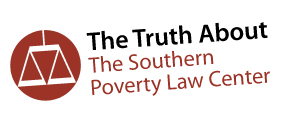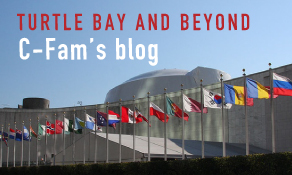The Gender Agenda: How the LGBT Movement is Hijacking Women’s Rights
Introduction
In the early 1990s, UN policy began to use the terms “gender,” “gender equality,” “gender balance,” “gender policies,” “gender-sensitive,” etc. to refer to the social, legal, and economic disparities between women and men and policies to address them. UN member states accepted the term “gender” with the understanding that it referred to the two biological sexes and the promotion of the equality of women and men, and nothing more. They thought that by using this term they were focusing on the advancement of women and girls.
In recent years, the term “gender” has acquired a host of new meanings and connotations, socially, legally, and in UN policy. In particular, LGBTQI+ lobby groups, unable to gain the political support to democratically carve out their own policy case and funding, have found ways to piggyback on the hard-fought gains of the women’s agenda. This Definitions issue will briefly introduce the debate about gender at the United Nations in recent years and draw out the major implications of this for UN policy and international law.
Gender in UN Policy and International Law
Gender is a grammatical attribute. In many languages, nouns have a “gender” and can either be masculine or feminine, or, in some cases, neuter. The pronouns and articles used in association with these nouns accordingly are of the same gender. The closest thing to this in the English language are the pronouns “he” and “she.” But sociologists and feminist philosophers and professors began to promote the notion of gender as a “social construct” in the 60s and 70s in academia in an attempt to overcome social stereotypes about the role of men and women in society.
From the start, the use of the word “gender” in UN policy was controversial. At the 1995 Fourth World Conference on Women in Beijing, UN member states had to agree to a definition of the word before it could be streamlined in UN policy. That definition was reaffirmed at the 1996 Habitat Conference in Istanbul and has not been replaced since. The definition reached at those conferences remains at the core of the mandate of the UN super-agency for women established by the UN General Assembly in 2010, the UN Agency for Gender Equality and Female Empowerment, commonly known as UN Women.
The following is the definition agreed by UN member states and included as an appendix in both the conferences:
Having considered the issue thoroughly, the contact group noted that: (1) the word “gender” had been commonly used and understood in its ordinary, generally accepted usage in numerous other United Nations forums and conferences; (2) there was no indication that any new meaning or connotation of the term, different from accepted prior usage, was intended in the Platform for Action.
Accordingly, the contact group reaffirmed that the word “gender” as used in the Platform for Action was intended to be interpreted and understood as it was in ordinary, generally accepted usage. The contact group also agreed that the present report should be read by the President of the Conference as a president’s statement and that the statement should be part of the final report of the Conference.
The 2000 Rome Statute of the International Criminal Court, which unlike UN conferences is binding international law, further clarified gender as a binary:
For the purpose of this Statute, it is understood that the term “gender” refers to the two sexes, male and female, within the context of society. The term “gender” does not indicate any meaning different from the above.
Most of the gender agenda is non-controversial. As countries agreed in Beijing and Istanbul, it has to do with broadly shared goals of including women’s participation in social, economic and political life, and ensuring they are able to enjoy equal rights with men. It should be noted, in the context of these definitions, in this regard that the gender agenda builds largely on the Convention on the Elimination of All Forms of Discrimination Against Women, which never uses the term “gender” once, and only refers to women and men as such.
United Nations and International Aid Efforts to Make LGBTQI+ Part of the Gender Agenda
Increasingly, international aid agencies, and UN agencies in particular, include men who identify as gay, have sex with other men, or who self-identify as women in their international aid “gender policies.” The United States Agency for International Development (USAID) is among these.
USAID Gender Policies
USAID’s internal guidance includes “sexual orientation and gender identity” as an aspect of gender analysis and integration in its operational policy, known as the Automated Directives System (ADS) Chapter 205 on “Integrating Gender Equality and Female Empowerment in USAID’s Program Cycle” (last updated on 04/27/2017). This USAID gender bureaucratic superstructure is now mandated by law under the Women’s Entrepreneurship and Economic Empowerment Act of 2018, signed into law by U.S. President Donald Trump.
ADS Chapter 205 describes in detail how the gender policies developed by the Obama administration must be integrated throughout the USAID program cycle in policy planning, design, implementation, monitoring, and evaluation. The Obama gender policy documents incorporated in ADS Chapter 205 use a broad definition of gender that explicitly includes “sexual orientation and gender identity” as an aspect of gender analysis and integration, thereby ensuring that men who have sex with men as well as men who self-identify as women are included in the women’s agenda of USAID.
The definition of “gender-based violence” is especially ambiguous:
Gender-Based Violence (GBV) is an umbrella term for any harmful threat or act directed at an individual or group based on actual or perceived biological sex, gender identity and/or expression, sexual orientation, and/or lack of adherence to varying socially constructed norms around masculinity and femininity. (ADS Chapter 205.3.9.1 Operational Plans)
The bureaus and operational units of USAID have wide discretion in carrying out gender analysis and integration as well as deciding the gender components of USAID policies, programs, and grants, including mandates with regard to LGBT issues. They are empowered to coordinate their actions with international organizations and agencies, including UN agencies. Unsurprisingly, what USAID is doing to promote an open definition of gender is reflected in the work of other aid agencies and UN agencies in particular.
There are ongoing changes in USAID gender policies under the Trump administration, including a revision of the gender policies Obama put in place. In mid-August USAID released a revision to the 2012 Global Strategy on Gender Equality and Women’s Empowerment. The draft returns the focus to the advancement of women and girls and is being attacked by progressive human rights groups for removing the promotion of LGBTI rights. It remains to be seen if the Trump Administration will also change the way ADS Chapter 205 is implemented and change the substantive focus of USAID in this regard.
UN Agency Gender Policies
UN agencies justify streamlining LGBT issues into UN gender policy through mandates in UN resolutions to address “multiple and intersecting forms of discrimination,” a term of art that is now streamlined in almost every UN General Assembly resolution having to do with women’s issues. They also try to include the term “women in all their diversity” in UN resolutions. For UN agencies the ambiguity of these terms is enough to constitute a mandate to change the definition of gender agreed by UN member states in UN policy and international law.
The United Nations Development Program (UNDP), the largest and most important UN agency, overseeing an over $5 billion budget each year, has produced a manual on The [Sustainable Development Goals] SDGs and Gender and Sexual Minorities, which links LGBT-specific programming to gender policy under the rubric of “the intersection of gender equality and sexual and gender minority issues.”
UN Women also promotes LGBTQI+ rights under the guise of promoting women’s rights. In 2019, UN Women Executive Director Phumzile Mlambo-Ngcuka announced that the agency would no longer be focused only on women’s rights, but rather on the “equality of all genders,” including LGBTIQ+. At the event, titled “Gender Diversity Beyond Binaries”, where she made this announcement, the acronym LGBTIQ+ was defined as referring to lesbian, bisexual, gay, transgender, questioning or queer, intersex, pan sexual, gender non-conforming, nonbinary, and “the full range of gender diversities that exist.”
Mlambo-Ngcuka oversees a nearly $1 billion annual budget. Her agency is solely dedicated to normative and lobbying activities like training feminist activists and politicians. It does not carry out any traditional UN programming in nutrition, education, health, infrastructure, or sanitation. This drift away from focusing on women means that aid meant for lobbying related to women’s issues will be increasingly redirected away from women to LGBTQI+ lobbying for men who have sex with men or men who subjectively identify as women.
Mlambo-Ngcuka admitted there was no agreed mandate from the General Assembly to do this, but she said her agency would “push the envelope” until “equality of all genders becomes the norm,” including overturning laws in the seventy nations that still do not allow homosexual sexual activity.
Redefining Gender as a Social Construct
Along the same lines as UN agencies and donor agencies, the International Law Commission asked the General Assembly in 2019 to discard the definition of gender as “male and female” in the Rome Statute of the International Criminal Court.
The International Law Commission wants to discard this definition in a new draft treaty on the prosecution of crimes against humanity. It gives an elaborate justification for adopting a definition of gender as “socially constructed” as opposed to “biological” sex in its report to the General Assembly. It notes how the prosecutor of the International Criminal Court, the UN Independent Expert on protection against violence and discrimination based on sexual orientation and gender identity, and other UN entities, already interpret gender as “socially constructed” and say that it includes “sexual orientation” and “gender identity.”
The legal effect of discarding the Rome Statute’s definition of gender will be to enshrine gender as a social construct in international law and elevate “sexual orientation” and “gender identity” to protected categories of international law. It wouldn’t merely leave the definition of gender open to each country to define in national legislation, as some might believe. Because of the elaborate rationale in the report of the International Law Commission, dropping the traditional definition of gender in the new treaty will essentially define gender as a social construct, with all this implies, including UN agencies recognizing a variety of genders and pressuring countries to do so as a human rights imperative.
The Social Construct of Gender Lacks Democratic Legitimacy
Changing the definition of gender to an open definition in UN policy or international law, or discarding the definitions of gender in UN policy and international law altogether would open the door to as many different meanings of “gender” as there are individuals. There is an ongoing open list of genders based on subjective self-definition used by social media giant Facebook. It includes proposed novel genders including: agender, androgyne, androgynous, bigender, cis, cisgender, cis female, cis male, etc. This will inevitably have implications for parental rights, medical ethics, and the protection of the family. There are serious questions about the legitimacy of this project. Nevertheless, Facebook is a private company, not an international institution governed by norms of consensus. The implications of importing this highly fluid and ill-defined notion of “gender” into international law are far more serious.
Most countries and their citizens do not consider gender a social construct, but a biological reality with legal implications. Through 2019, only seven countries allow legally recognized gender change based on self-identification alone, according to the pro-LGBT group Amnesty International. Most of the nearly 40 countries where individuals are allowed to legally assume a transgender identity require a psychiatric determination of gender dysphoria or a surgical operation to mutate the sexual physiognomy of an individual. Some even require individuals to divorce their spouses and do not allow individuals with children to legally change their gender.
The process the International Law Commission used to make this change gives the impression of impropriety and of being the result of undue influence. The commission only began to revisit the definition of gender after LGBT organizations lobbied the commission to drop the definition of gender as “male and female.” Countries in favor of the Rome Statute’s definition of gender as “male and female” have never been given the opportunity to object to the change. The International Law Commission told the UN General Assembly that it would not change any of the definitions from the Rome Statute when it started work on the new treaty in 2015, and has repeatedly maintained this position, even in the 73rd session of the General Assembly.
The ICC prosecutor, the UN’s independent expert on sexual orientation and gender identity (SOGI), and other sources cited by the International Law Commission for changing the definition of gender, do not have any binding authority to change the definition of gender in the Rome Statute. It is disingenuous of the commission to cite UN entities who deliberately misinterpret binding international law in their non-binding opinions as if they were authoritative.
Conclusion
The redefinition of gender to advance LGBT programs is a topic of controversy even among feminist organizations. Some feminist organizations, most notably the Women’s Liberation Front, are opposed to such a move. Their position has increasingly found support among celebrities and public figures.
Despite the political controversy around this issue, a focus on an open definition of gender is now pervasive in the UN system and beyond, as can be gleaned by the annual UN report on “The Role of the United Nations in Combatting Discrimination and Violence against Lesbian, Gay, Bisexual, Transgender and Intersex People: A Programmatic Overview.” UN member states need to decide whether or not this is what they want, or the UN agencies will decide this for them.
In the U.S. legal system, the U.S. Supreme Court appears to have decided this issue in a way that precludes democratic debate. In the 2019 decision in Bostock, the court read the words “sexual orientation and gender identity” in U.S. legal protections on the basis of sex, thereby allowing the LGBTQI+ agenda to piggyback on the hard-won political gains of the women’s agenda.
Women and girls are being erased from international assistance and pushed aside in programming. UN Member States should restore a proper understanding of the term gender in international aid, and so help preserve the hard-won gains of women and girls. Member States should reject the new UN treaty on crimes against humanity. But they should also restore a proper understanding of gender more broadly in UN policy and programming. Member States should avoid language in UN resolutions that allows ambiguity as to how the term gender is understood by UN agencies, including by avoiding terms like “multiple and intersecting” and “women in all their diversity.” They should refer to women and girls as much as possible in UN resolutions whenever the word gender is used. Above all they should insist on referring to the Beijing and Habitat conference as well as the Rome statute definitions of gender every time a resolution about women is negotiated and adopted.
See PDF for full citations.
View online at: https://c-fam.org/definitions/the-gender-agenda-how-the-lgbt-movement-is-hijacking-womens-rights/
© 2025 C-Fam (Center for Family & Human Rights).
Permission granted for unlimited use. Credit required.
www.c-fam.org









